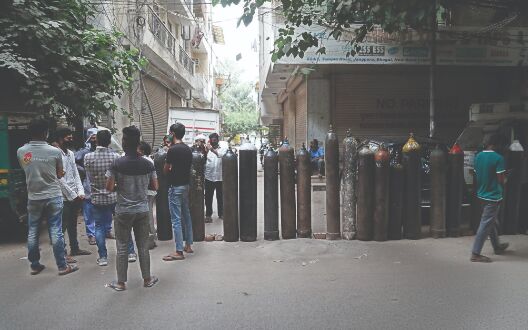Delhi looking to use nitrogen, argon tankers to build O2 storage capacity

New Delhi: The Delhi government is firming up a plan to create medical oxygen storage capacity in the national capital, since it relies on storing the life-saving gas outside the city currently, a senior government official said on Wednesday.
OSD (Health) Ashish Kundra said they have seen a reduction in the number of SOS calls from hospitals over oxygen shortage since the national capital has started receiving an average of 590 metric tonnes every day.
The national Capital had seen an acute shortage of oxygen when the cases were on the peak with many hospitals sending out SOS messages about their depleting oxygen supplies. Nearly 20 patients at Jaipur Golden Hospital and 12 patients at Batra Hospital had lost their lives due to the hospitals not receiving supplies in time.
The government's Health Department is now preparing a plan to create operational reserves for the life-saving gas in the national capital. Currently, there are no storages in the national capital and the government has to store the life-saving gas in Panipat and Soorajpur plants.
"We are looking at storing the life-saving gas in argon and nitrogen storages in Delhi," he said.
"The national capital has a requirement of 700 MT but it received 488 MT and 499 MT on May 7 and May 8. But after that, it has received over 500 MT. It received 596 MT, 623 MT and 570 MT on May 9, 10 and 11 respectively," he said in an online briefing.
The government is also looking at capping the prices for life-saving gas. Currently, there are both government and private entities involved.
"There are 100 private dealers. We had a meeting with district magistrates and private refillers. The Centre decides on the prices and then there are transportation costs and some margin kept for minimum profit. We will put forth a proposal on capping the prices," he told reporters.
When asked about creating a buffer stock, he said the Health Department is trying to engage players like IGL to build capacity in the city. Under CSR, IGL has already committed to adding capacity over the next two weeks.
"Currently, we are able to store 150-160 MT of the life saving gas," he said. There are operational reserves and storage reserves. Since there is a high demand from hospitals, these reserves are used for them.
The senior official also said that even on the supply side, they have reached a stage of "predictability and reliability".
"The Capital receives 42 per cent oxygen supply through train network and 58 per cent by road. When the cases were on the peak, it used to receive zero supplies through train.
The road transport is prone to disruptions, breakdown of tankers, which leads to delays," he said.



